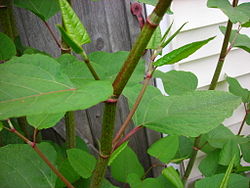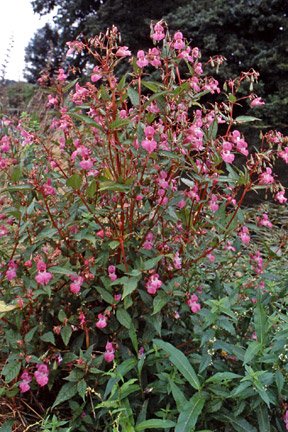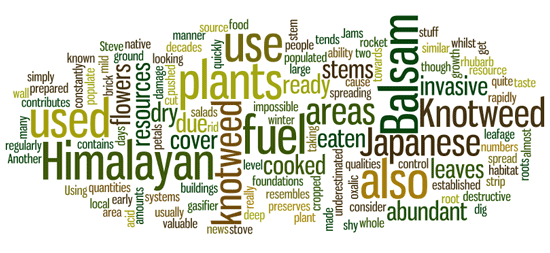Himalayan Balsam and Japanese knotweed are constantly in the news for their invasive and destructive qualities.
 Japanese knotweed are almost impossible to dig up once they are established due to their rapidly spreading deep root systems, the roots have also been known to cause damage to foundations of buildings and have pushed over many a brick wall over the decades. Himalayan Balsam tends to cover an area quite quickly and is taking over the habitat of native plants in some areas due to their ability to spread and cover areas that they populate.
Japanese knotweed are almost impossible to dig up once they are established due to their rapidly spreading deep root systems, the roots have also been known to cause damage to foundations of buildings and have pushed over many a brick wall over the decades. Himalayan Balsam tends to cover an area quite quickly and is taking over the habitat of native plants in some areas due to their ability to spread and cover areas that they populate.
But whilst these plants are here we really should be looking at them as valuable local resources that we can usually source in abundant quantities. Using these invasive plants as an abundant resource also contributes towards the control of their numbers. I would say to people who are prepared to use these two plants as resources, don’t be shy, and use it in large amounts.
 Japanese Knotweed can be cropped when the plant is in its early days of its growth, its taste when cooked resembles mild rhubarb, and not to be eaten too regularly though as it contains oxalic acid. Another use for Knotweed is as a fuel, cut them down at ground level, get rid of any leafage, and dry them out ready for your rocket stove or gasifier. Their use as a fuel should not be underestimated when you consider that there are whole areas populated by knotweed.
Japanese Knotweed can be cropped when the plant is in its early days of its growth, its taste when cooked resembles mild rhubarb, and not to be eaten too regularly though as it contains oxalic acid. Another use for Knotweed is as a fuel, cut them down at ground level, get rid of any leafage, and dry them out ready for your rocket stove or gasifier. Their use as a fuel should not be underestimated when you consider that there are whole areas populated by knotweed.
Himalayan Balsam can also be used as a food stuff, Jams and preserves can be made from the petals of it flowers, it leaves can be used in salads and its stems can be cooked and eaten. In a similar manner to the Knotweed, Himalayan Balsam can also be used as a fuel, simply strip the leaves and flowers from the stem and dry out the stems ready to be used as fuel over the winter.
Steve – Permanent Culture Now

